
What do you mean I’ve got food on my nose?

Doris, cleaning up after the birds. We just realized yesterday after I took this photo, that it appears she’s pregnant. Oh boy. More bears to visit.
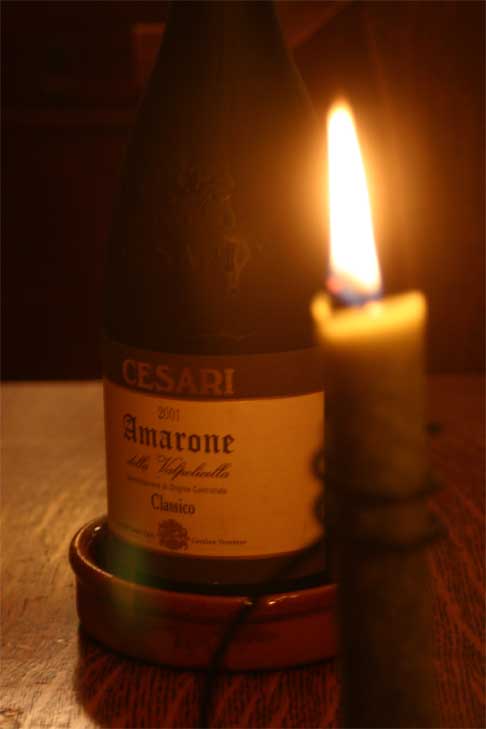
And here is a link to what we had for dinner: Osso Buco
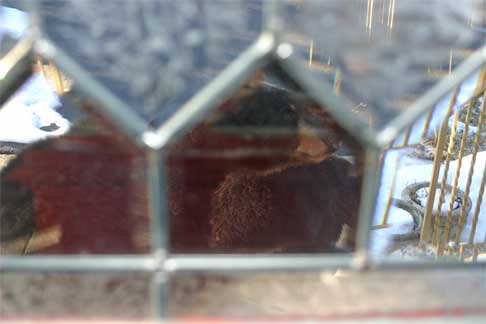
Okay, take a good look at the photo above. I want you to tell me what you see. This was taken late yesterday afternoon, looking through the leaded window of our front door. Take a very close look through the unfrosted pane and you might just see the visitors that came calling, all the way up the five steps on my front porch.
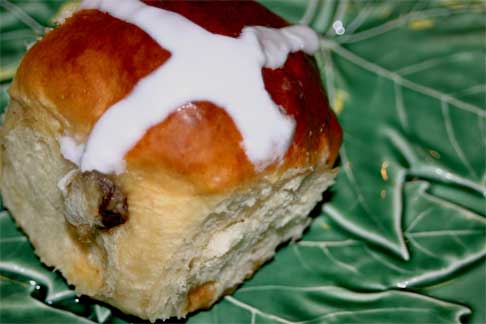
Hot cross buns! Hot cross buns!
One a penny, two a penny—Hot cross buns!
If you have no daughters
Pray give them to your sons,
One a penny, two a penny—Hot cross buns!
This is the time of year when Hot Cross Buns start showing up in stores and bakeries. I haven’t eaten one for years, and yesterday while doing some grocery shopping I couldn’t miss all the packages of these seasonal treats stacked in the bakery aisle. I ate one for breakfast this morning. Indeed, now I know why they need to be eaten hot with butter—without warming them up they are a bit heavy and dry. I knew part of the tradition surrounding them, but when I looked further this morning, I found out some other interesting facts. Did you know ...
“Hot Cross Buns were traditionally served during the Lenten Season, especially on Good Friday. Their origins, however, like the Easter holiday, are mixed with pagan traditions. To the ancient Aztecs and Incas, buns were considered the sacred food of the gods, while the Egyptians and Saxons offered them as sacrifices to their goddesses. The cross represented the four quarters of the moon to certain ancient cultures, while others believed it was a sign that held supernatural power to prevent sickness. To the Romans, the cross represented the horns of a sacred ox. The Christian church adopted Hot Cross Buns during their early missionary efforts to pagan cultures. They re-interpreted the “cross” of icing which adorns the bun to signify the cross on which Jesus sacrificed His life. Some historians date the origin of Hot Cross Buns back to the 12th century, when an Angelican monk was said to have placed the sign of the cross on the buns to honor Good Friday, known at that time as the “Day of the Cross.” In 1361, a monk named Father Thomas Rocliffe, was recorded to have made small spiced cakes stamped with the sign of the cross, to be distributed to the poor visiting the monastery at St. Albans on Good Friday. According to the scholar Harrowven, the idea proved so popular that he made the buns every year, carefully keeping his bun recipe secret.
According to tradition, Hot Cross Buns were the only food allowed to be eaten by the faithful on Good Friday. Made from dough kneaded for consecrated bread used at Mass or Holy Communion, and thus representative of Christ’s body, Hot Cross Buns were also credited for miraculous healing and for protection. Throughout the years, Hot Cross Buns baked on Good Friday were used in powdered form to treat all sorts of illnesses. In addition, many families hung the buns from their kitchen ceilings to protect their households from evil for the year to come. The tradition, however, suffered attack during the 16th century. During Queen Elizabeth I’s reign, when Roman Catholicism was banned, ‘backward - lookers’ were reportedly tried for Popery for signing the cross on their Good Friday buns. The accused often claimed that it was necessary to mark a cross on the dough, to ensure that the buns would rise. However, the popularity of the buns prevailed, and the Queen resorted to passing a law which limited the bun’s consumption to proper religious ceremonies, such as Christmas, Easter or funerals.”
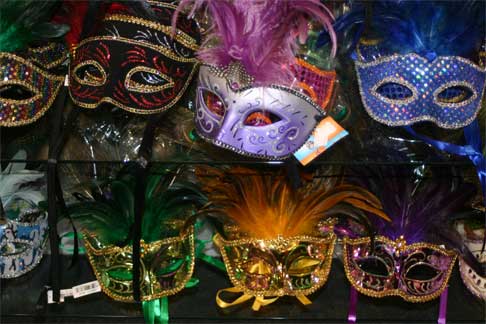
In honor of Mardi Gras this week, here are a few masks I found interesting.
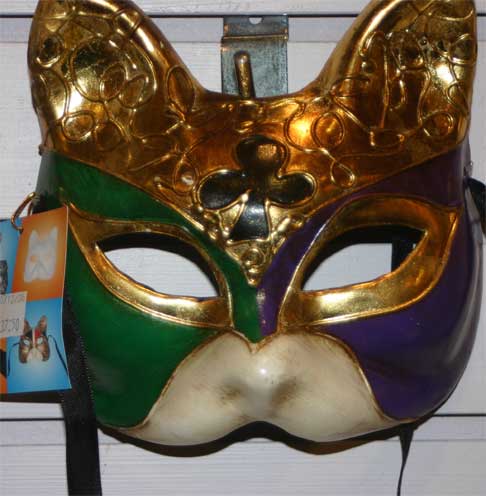
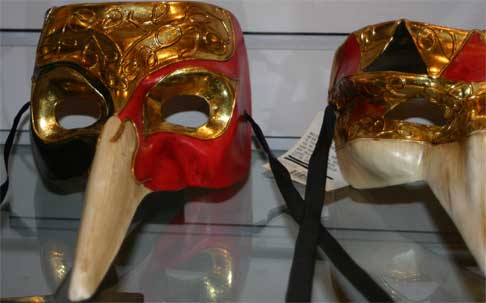
Page 263 of 302 pages
‹ First < 261 262 263 264 265 > Last ›








